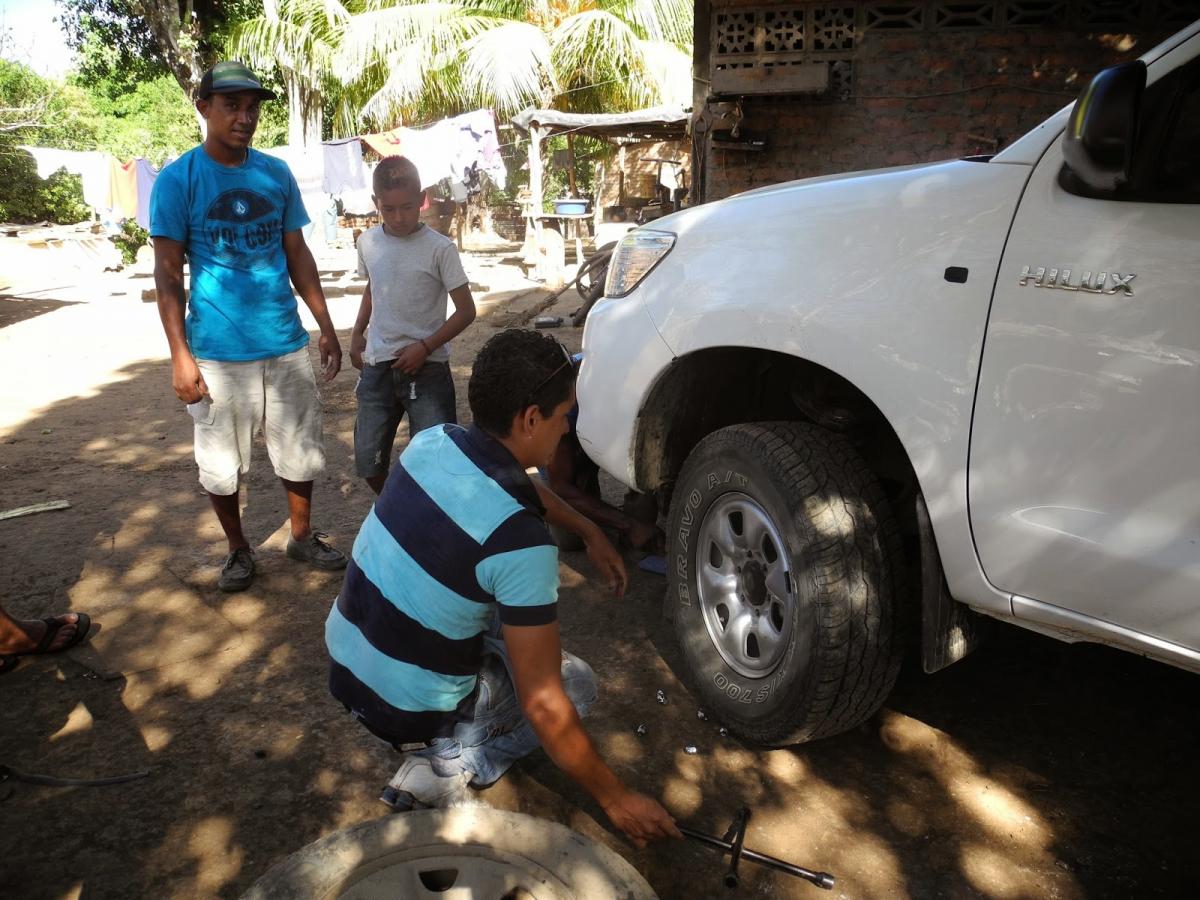No trip to Nicaragua is complete without a driving adventure story and this trip was a good example.
We rented a Toyota Hilux at the airport and were pleased with the comfort and space for four individuals and a lot of gear.

Yesterday we were up before dawn for the trip back to the airport. The drive is about three hours, but I always add on a few more hours to compensate for Nicaragua. Glad I did.
Just as we entered Rivas, smoke started to billow out of the engine of the truck. There was the smell of something burning. People on the road shouted for us to stop. However, I knew that I was only a short distance from a gas station on the Pan Am Highway and I decided to head straight there. Another good decision. Once I reached the gas station and turned off the engine, the truck was no longer operational. Had I stopped in the middle of one of the main Rivas streets, I might still be there!
After we opened the hood, there was oil everywhere. Something important was leaking.
The gas station person suggest a "mechanico" and while that was the correct solution for the car, this was not the solution for us. We had a plane to catch. I paid the gas station to store the car and we hired a taxi to the airport. We made our flight. This morning I wrote a detailed email to the Manager of AVIS Nicaragua. Technically, I have not returned the car! We shall see how this works out.
|
Tire Change - Cost 80 cents!!!! We paid more. |
That was not our only car adventure. We also had a flat tire during the first week. The spare tire is locked in place under the rear box of the truck. Tires are hot commodities in Nicaragua and subject to theft. The small key provided did not open the padlock! We were given the wrong key. So the lock had to be cut off. This sort of thing is par for the course in Nicaragua. Of course the key didn't fit. Why should we expect otherwise?
We drove on the spare for the rest of the trip and this was a concern, since the rural roads around Gigante are strewn with sharp, jagged rocks, which are definitely rough on tires. I thought about driving into Rivas to repair the spare, but this was a longer distance and I reasoned that waiting until we had to drive to Rivas for groceries was a better plan. Turns out we never did need to drive into Rivas except on the departure day and the spare lasted fine.
Even without breakdowns and flat tires, driving in Nicaragua is always a challenge. The best roads in Nicaragua are only just ok. The Pan American Highway is a paved, two-lane, undivided highway with either a soft shoulder or no shoulder. The rural roads are very bumpy and filled with deep potholes that are much worse immediately after the rainy season.
Pedestrians and bicycles are very common hazards on the roads. The Nicaraguan pedestrian perspective about the riskiness of standing on a busy road seems very casual to me. I am amazed that I do not see or hear about more pedestrian injuries. People seem oblivious to the cars. I drive very defensively.
|
Always need to keep a look out for the animals. |
Animals are common on rural roads and similar to the people, have a very casual attitude about cars. Dogs sleep on the roads, pigs routinely meander across roads, and chickens definitely scurry across the roads. I am told that if you kill an animal, the owner can claim compensation, which seems reasonable. You need to be very careful when there is both an adult and a young animal on the road. If the adult moves across it is best to wait until the youngster follows, because if you try to drive between them, this might precipitate a sudden untimely dash by the younger animal to catch up with the parent.

There are oxen, horses, and donkeys, sometimes hooked up to a cart that seems to harken back to past times, but definitely still functional in Nicaragua.
This blog was originally posted on http://helpnicaraguachildren.blogspot.com/. Please note, Dr Robson is not accepting donations at this time. However, he would greatly appreciate your comments and suggestions in support of his efforts.




